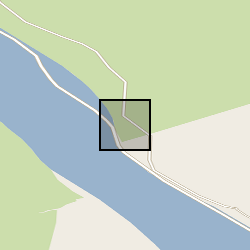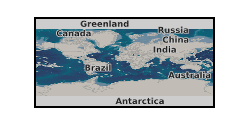Geological Survey of Israel
Type of resources
Topics
Keywords
Contact for the resource
Provided by
Years
Formats
Representation types
Update frequencies
-

The data presented in the Table 1 are U-Th chronology results of Siberian and Mongolian speleothems. This data is a basis for a scientific paper of Vaks, A. et al. (2013) "Speleothems Reveal 500,000-Year History of Siberian Permafrost." Science 340 (6129): 183-186. The table shows the ages of 111 layers of 36 speleothems taken from the six caves of Siberia and Mongolia. Vadose speleothems grow in caves of unsaturated zone when atmospheric water infiltrates into the caves from the surface. Therefore these speleothems cannot grow in permafrost, as well as in dry desert conditions. Therefore in Siberia the periods of speleothem growth show intervals during which the Siberian permafrost thawed and became discontinuous or absent. In Mongolian Gobi Desert the speleothem deposition periods show when the desert was both humid than present and warm enough to enable water infiltration into the caves. The data presented in tables 2 and 3 are OxCal-4.1 modeling results of the Table 1 chronology data for the Holocene (Table 2) and Marine Isotopic Stage (MIS) 5.5 (Table 3). The tables show exact durations of Holocene and MIS-5.5 permafrost thawing periods in Botovskaya and Okhotnichya Caves.
-

The tables describe U-series chronology of speleothems in Ledyanaya Lenskaya and Botovskaya caves used in the manuscript "Paleoclimate evidence of vulnerable permafrost during times of low sea ice" by Vaks et al. 2020, Nature 577, 7789, 221–225. The information included in the tables is listed as following: Table 1: Table 1a includes U–Pb data from Ledyanaya Lenskaya and Botovskaya caves; Table 1b includes common Pb estimates for Ledyanaya Lenskaya and Botovskaya caves. Table 2: U–Th chronology of speleothems from Botovskaya Cave. The data shows when speleothems were growing in Ledyanaya Lenskaya Cave during the last 1.5 Ma and in Botovskaya Cave during the last 0.7 Ma. Speleothems grow when water seeps from the surface into the caves. If the soil and rock above the cave is permanently frozen, water will not reach the cave and speleothems will not grow. Together with the data from Vaks et al (2013) "Speleothems Reveal 500,000-Year History of Siberian Permafrost", Science 340, 6129, p 183–186, these speleothem deposition periods show when the permafrost above the two caves was discontinuous or absent. Published Paper: Vaks, A., Mason, A. J. Breitenbach, S. F. M., Kononov, A. M., Osinzev, A. V., Rosensaft, M., Borshevsky, A., Gutareva, O. S., Henderson, G. M. Palaeoclimate evidence of vulnerable permafrost during times of low sea ice. Nature 577, 7789, 221–225 (2020) doi:10.1038/s41586-019-1880-1
 NERC Data Catalogue Service
NERC Data Catalogue Service